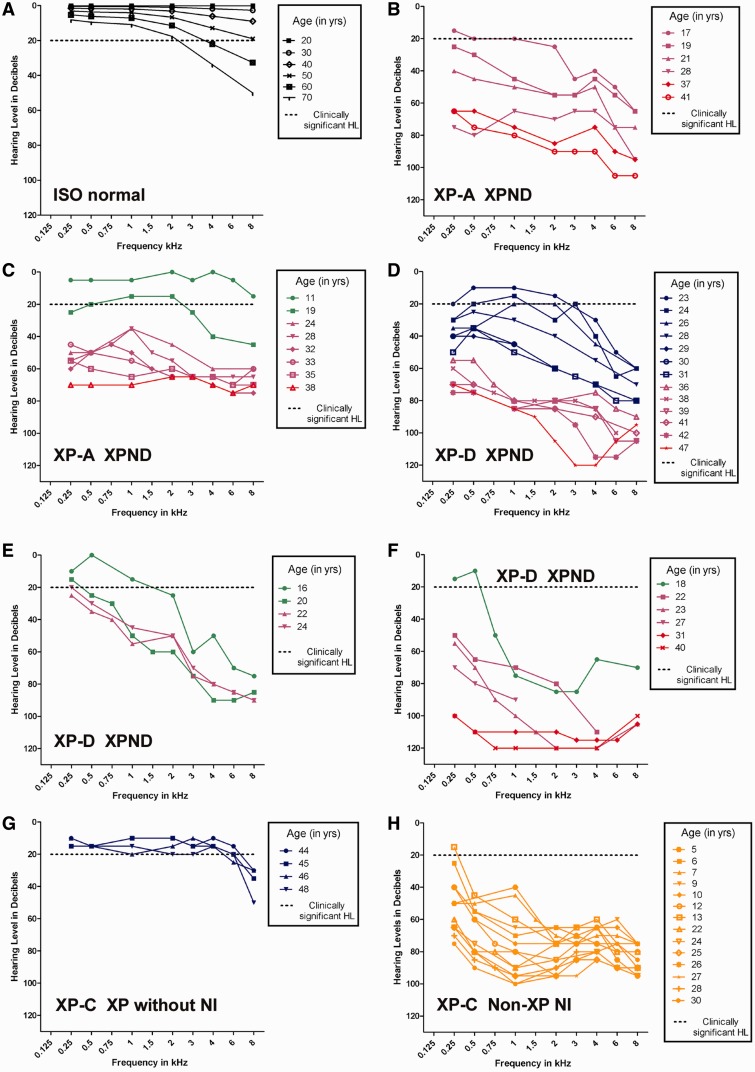Figure 2.
Longitudinal pure-tone air-conduction audiograms and degree of neurological involvement for individual patients with xeroderma pigmentosum. Individual patient thresholds for the worse hearing ear. Neurological status is colour coded: blue = no neurological involvement; green = mild mental retardation (IQ > 50), only hyporeflexia; purple = gait disturbance because of spasticity or ataxia, moderate mental retardation (IQ < 50); red = severe mental retardation, cannot walk, cannot speak and/or bed resting; orange = non-xeroderma pigmentosum-type neurological involvement [modified from Nishigori et al. (1994)]. (A) Age-based normative thresholds derived from combined male and female subject data from ISO 7029. (B) Patient XP12BE, XP-A with xeroderma pigmentosum-type neurological degeneration. (C) Patient XP19BE, XP-A with xeroderma pigmentosum-type neurological degeneration. (D) Patient XP33BE, XP-D with xeroderma pigmentosum-type neurological degeneration. (E) Patient XP29BE, XP-D with xeroderma pigmentosum-type neurological degeneration. (F) Patient XP18BE, XP-D with xeroderma pigmentosum-type neurological degeneration. (G) Patient XP-1BE, XP-C, xeroderma pigmentosum without neurological involvement (NI). (H) Patient XP21BE, XP-C with non-xeroderma pigmentosum type neurological involvement. HL = hearing loss; XP = xeroderma pigmentosum; XPND = xeroderma pigmentosum-type neurological degeneration.

